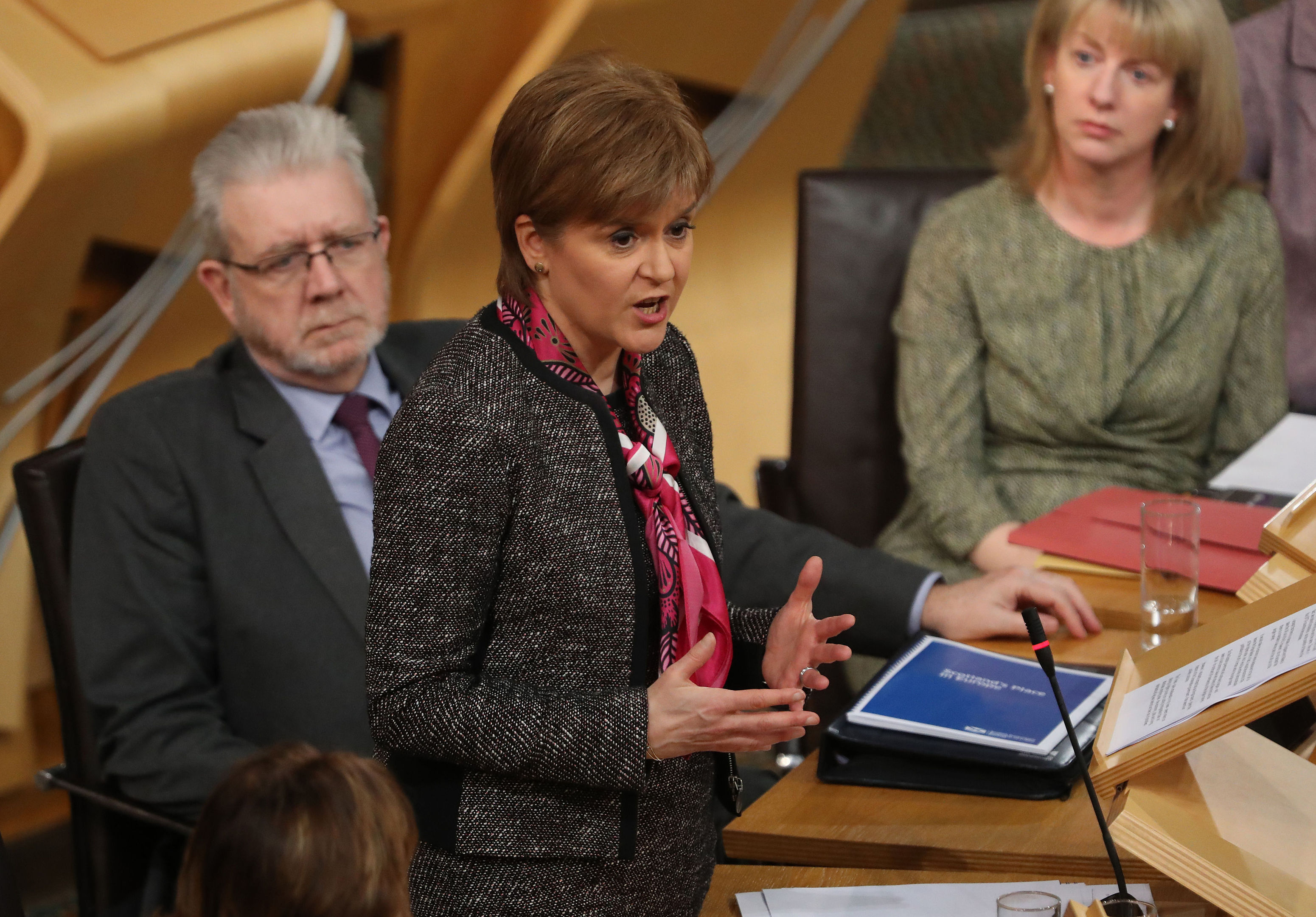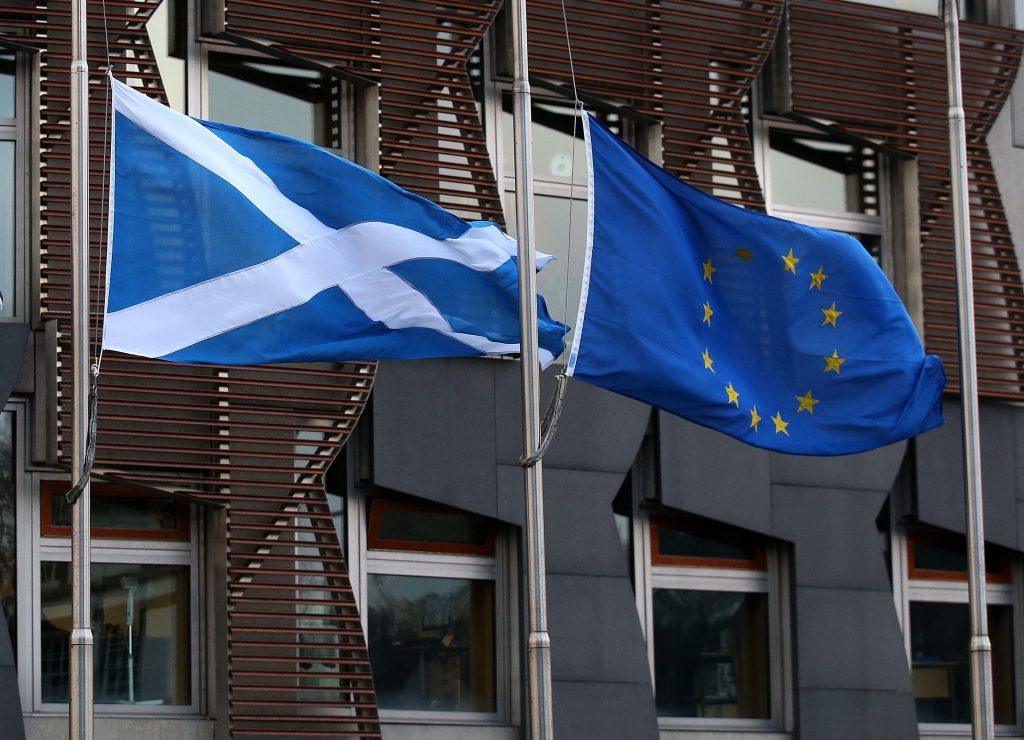
NICOLA STURGEON has published proposals for protecting Scotland’s place in Europe after the vote to leave the European Union (EU).
The First Minister has called on opposition parties at Holyrood to get behind her proposals, including detailed plans to keep Scotland in the European single market.
In a statement to Holyrood, she said: “To those who say they want to protect Scotland’s place in Europe but won’t get behind these proposals, the question will be: if not this plan, then what?
“Simply criticising the Scottish Government’s proposals without coming up with alternatives will be tantamount to telling Scotland that it simply has to suck up whatever the Tory Brexit government at Westminster decides, no matter how damaging.
“I suspect that will be the position of the Scottish Conservatives but it will be a much harder, I would suggest impossible, position for Labour and the Liberals to explain.”
Failing a “soft Brexit”, in which the UK as a whole would stay in the single market and the customs union, Ms Sturgeon has proposed an arrangement which would allow Scotland to remain in the free trade bloc – through the European Free Trade Association (EFTA) and the European Economic Area (EEA) – even if the rest of the country leaves it.
She has also called for more powers to be devolved to Holyrood after Brexit in areas such as immigration and employment law.
Why the Scottish Government has drawn up Europe proposals and what they mean
Why has the Scottish Government published the document?
In the referendum on June 23, Scotland voted to stay in the European Union (EU) by a margin of 62% to 38% while the UK as a whole voted to leave by 52% to 48%. Ms Sturgeon pledged to ensure the vote north of the border was taken account of and said her government would explore all options to protect Scotland’s place in Europe, setting up an expert group to look at the issue. This included looking at options that might allow Scotland to remain in the single market even if the rest of the UK leaves.
What does the document say about the UK Government’s position?
The Scottish Government wants the UK to remain in the European single market and argues this could be achieved by it staying in the European Economic Area (EEA) and within the EU customs union. The paper argues there is “no basis whatsoever” for the assumption that those who voted to leave the EU also wanted to exit the European single market. Scottish ministers argue that staying in the single market is crucial for the economy.
What about different options for Scotland?
The Scottish Government says that despite an “overwhelming” case for the UK Government continuing European single market membership through the EEA, it is not confident that will happen. In that case, Ms Sturgeon has put forward alternative proposals which she argues would allow Scotland to remain in the single market even if the UK leaves.
This could involve something similar to a “Norway-style” agreement, with Scotland potentially becoming a full or associate member of the European Free Trade Association (EFTA) and thereafter becoming party to the EFTA EEA agreement. Other variations could see Scotland, through the UK, enter a direct association with the EEA or seek associate membership of EFTA and subsequently becoming party to the EEA agreement.
What about new powers for the Scottish Parliament?
The paper argues that more powers will have to be transferred to Holyrood in order to deal with the consequences of Brexit and potentially pursue a separate arrangement for Scotland. This would include powers in areas of Scottish Parliament responsibility such as fishing and agriculture being repatriated from the EU in addition to new controls over immigration and trade negotiations.
How has the UK Government responded?
The UK Government welcomed the publication of the paper and said it will “give it careful consideration”, emphasising the government was committed to securing a deal that works for the UK as a whole. However, Chancellor Philip Hammond appeared to rule out a special Brexit deal for Scotland as “unrealistic” during a visit to Edinburgh earlier this month.
What about Scottish independence?
In the days following the Brexit vote, Ms Sturgeon said a second referendum on Scottish independence was “highly likely” and in the document she reiterates that independence is her “preferred option” for protecting Scotland’s place in Europe.
The Scottish Government is currently consulting on a draft Bill that could bring about a second vote on the issue but polling data suggests that support for independence has not surged since the Brexit vote. Ms Sturgeon says the focus of the paper is to look for common ground with the UK Government on a solution that would protect Scotland’s position in the single market “from within the UK”.

Enjoy the convenience of having The Sunday Post delivered as a digital ePaper straight to your smartphone, tablet or computer.
Subscribe for only £5.49 a month and enjoy all the benefits of the printed paper as a digital replica.
Subscribe